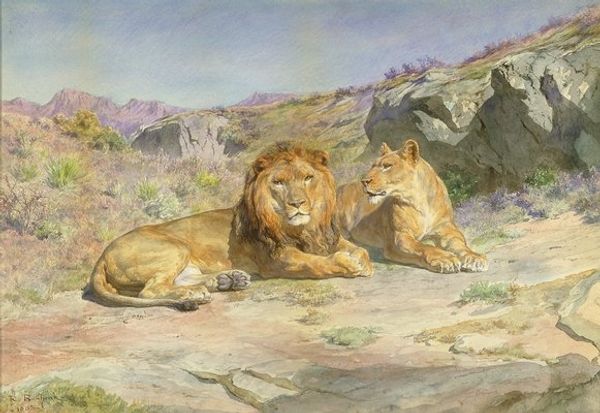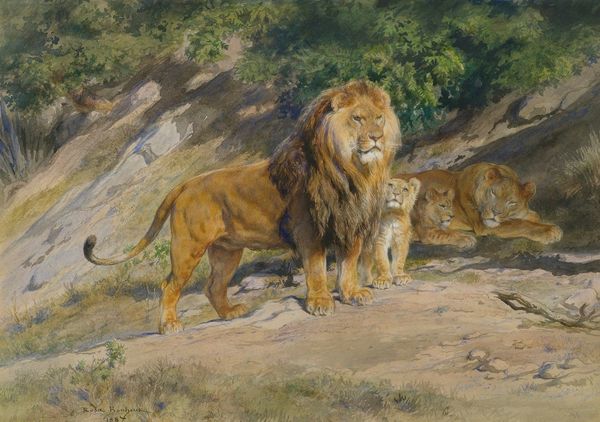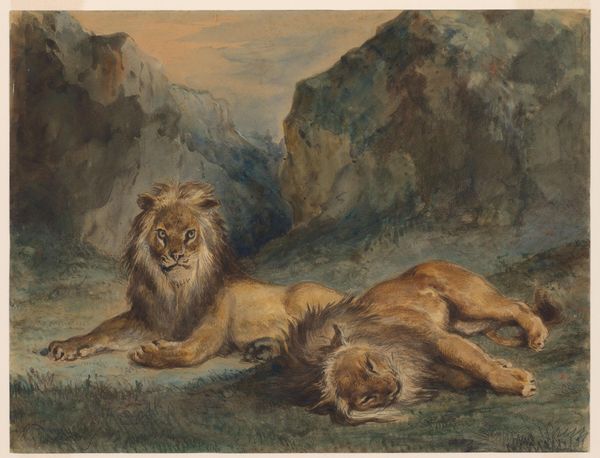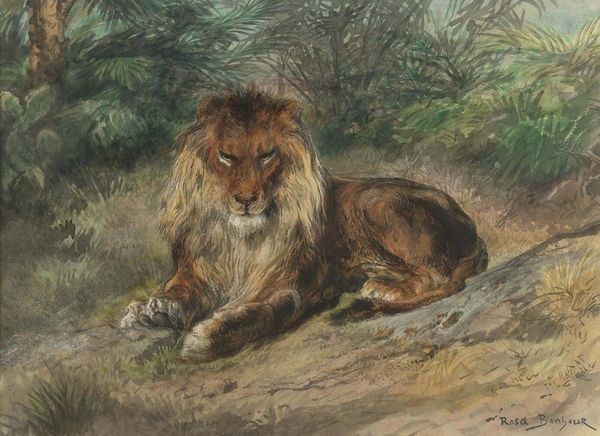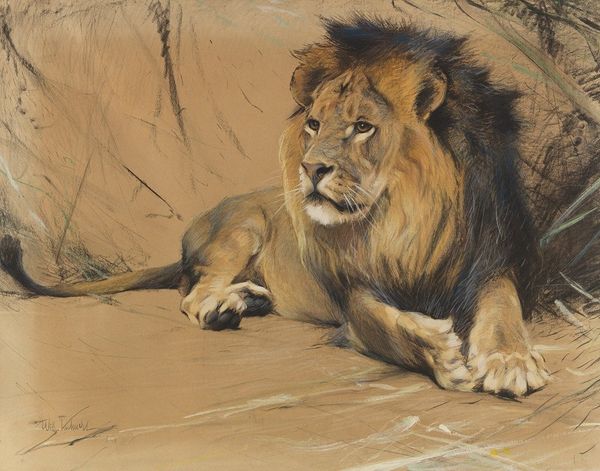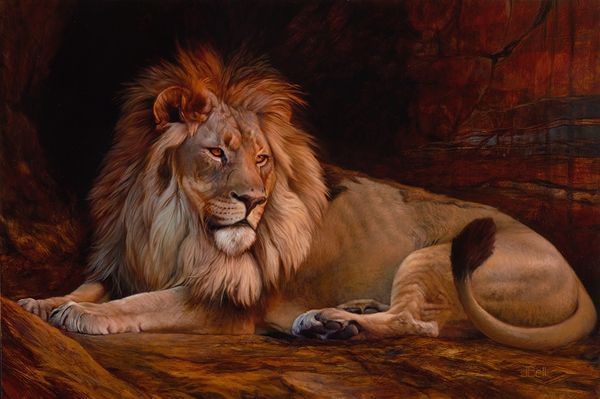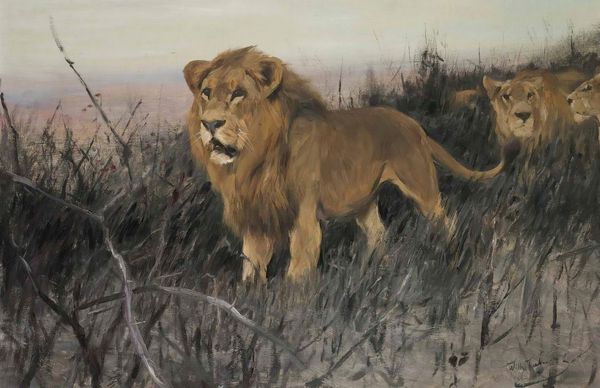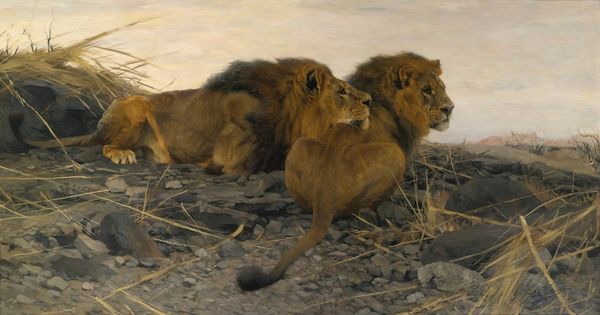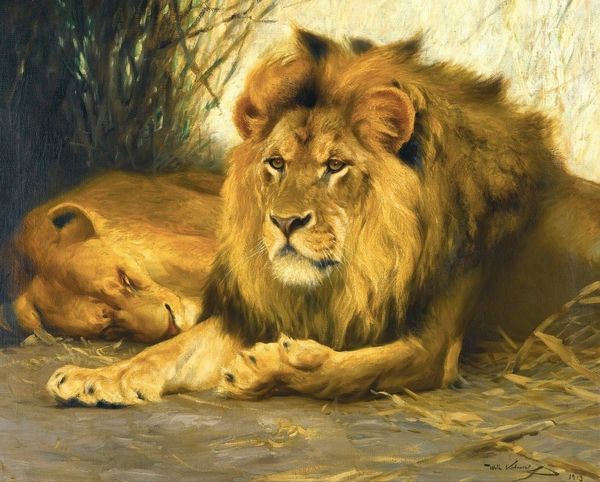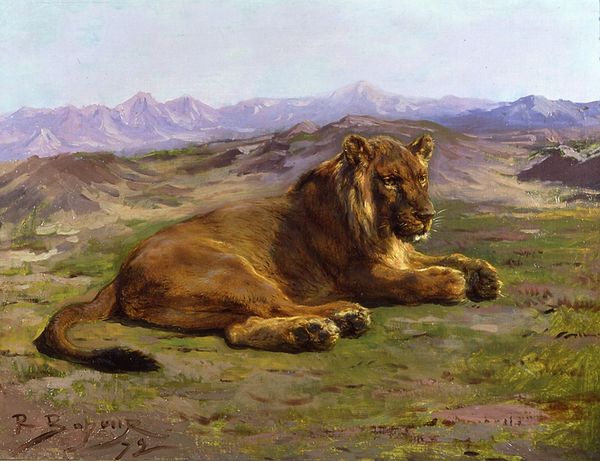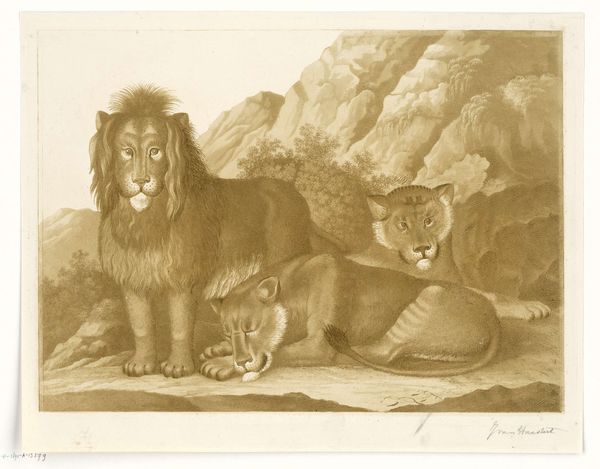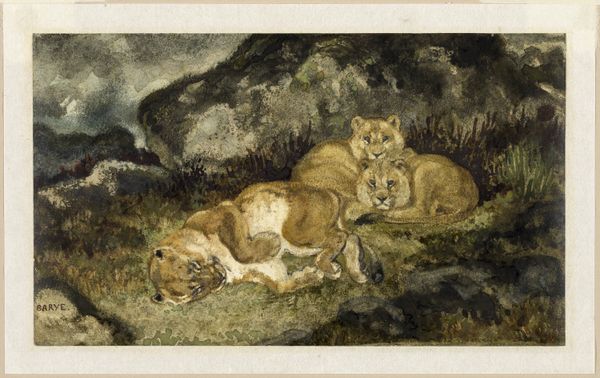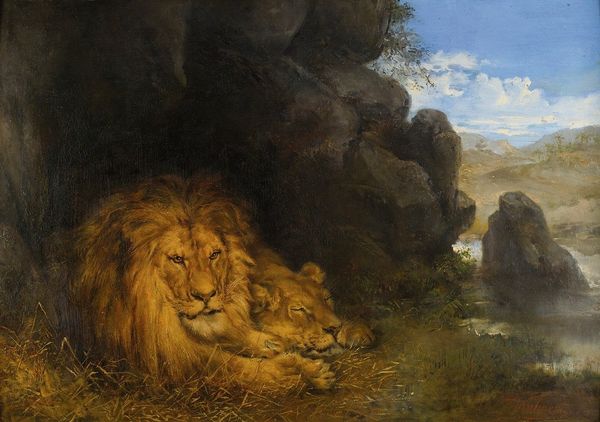
drawing, painting, watercolor
#
portrait
#
drawing
#
painting
#
landscape
#
watercolor
#
genre-painting
#
watercolor
#
realism
Dimensions: 15 1/2 x 22 in. (39.37 x 55.88 cm) (image)
Copyright: Public Domain
Rosa Bonheur created this watercolor painting of lions, titled "Royalty at Home", which now resides at the Minneapolis Institute of Art. Bonheur, a woman artist in 19th-century France, challenged traditional gender norms. The image of a lion and lioness, symbols of strength and regality, offers a glimpse into Bonheur’s world, where animal portraiture became a conduit for exploring themes of power and identity. Bonheur lived openly as a lesbian, and she obtained a permit from the police to wear men’s clothing so that she could freely and safely visit farms and livestock shows to pursue her art. Consider the implications of a woman artist portraying male and female lions in a shared space. Are they equals, or are traditional power dynamics still at play? Bonheur’s artistic choices invite us to reflect on how societal roles and expectations can be challenged through art, offering a unique lens through which to view both the animal kingdom and human society.
Comments
minneapolisinstituteofart almost 2 years ago
⋮
Rosa Bonheur depicted this lion and lioness in a rocky north African landscape, but it is more likely that she studied the animals in captivity in France. In her forthcoming book "Myth and Menagerie: Seeing Lions in the Nineteenth Century" (New Haven: Yale University Press, 2024), scholar Katie Hornstein proposes an identity for the two lions depicted: Sultan and Saïda, the famous lion and lioness owned by the French lion tamer François Bidel. Bidel described a work by Bonheur in his collection depicting the pair that closely resembles the present watercolor. Sultan killed a man, a railway porter, on his voyage from Africa to France in 1879, and he seriously mauled Bidel during a performance in 1886. This ended the lion's stage career and relegated his existence to a cage, albeit still on public display. Saïda died of stomach inflammation after mauling a bear in a performance, perhaps in 1883 (Hornstein 2024, 247n80). This would make the watercolor a posthumous portrait of her.
Join the conversation
Join millions of artists and users on Artera today and experience the ultimate creative platform.
